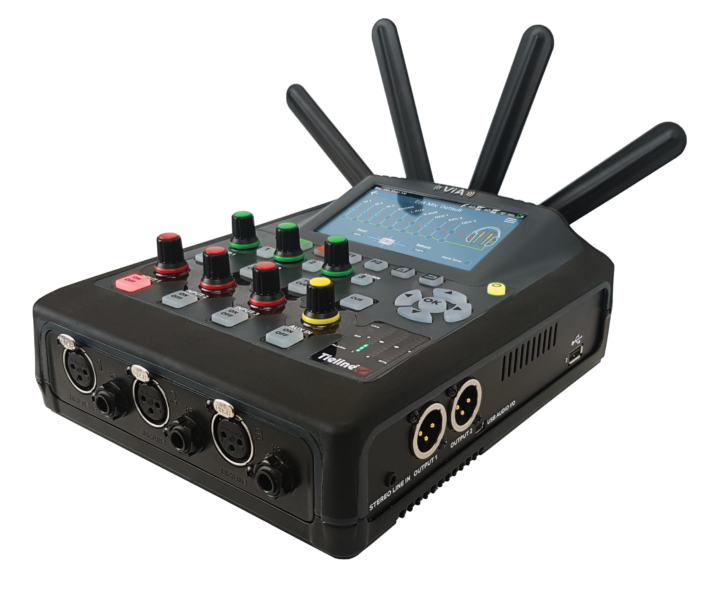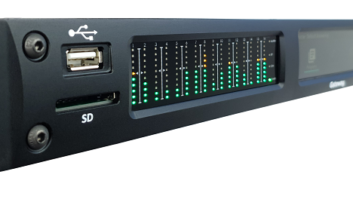Remote audio is the heart of the business at Tieline, which was established in 1981 and serves international broadcast and industrial audio and video markets.
Doug Ferber is vice president of sales for the Americas. This interview is excerpted from the Radio World ebook “Remote Contribution.”
RW: Doug what’s the most important recent or pending trend in remote audio since we last talked?

Doug Ferber: Our suspicions were spot on: We see a migration from cheap, quick-fixes including WebRTC solutions to higher-quality hardware codecs that feature low-latency, high-quality audio with added failover protection.
RW: Did the pandemic change the way your clients view remote contribution?
Ferber: With so many of the radio talent still working from home studios, all of a sudden engineers went from managing as few as one or two studio locations to as many as 10 or 20. Managing all the remote contribution has become a challenge and is a top priority. In addition, given the long-term nature of broadcasting from the home studio, the makeshift setups are being replaced with higher-quality AoIP hardware solutions.
RW: What recent Tieline product or feature typifies the changing way in which broadcasters are managing remote audio?
Ferber: Cloud Codec Controller to the rescue! Tieline’s CCC is a hybrid cloud solution that allows engineers to manage all of their Tieline codecs from one interface.
Every element of the codecs can be controlled with CCC except the on/off button. Most will feel confident that their talent can turn the unit on. After that all bets are off, right?
Suppose an engineer gets a call from talent over the weekend, or at night because they are having trouble connecting to the studio. Before heading out to the location, the engineer can diagnose and often fix the problem from his recliner. The CCC also allows engineers to monitor 24/7 and set alarms to let them know when one of them has lost a connection. With so many more remote setups to manage, the CCC has really become the “engineer’s buddy.”
[Visit Radio World’s News and Business Page]
RW: What’s the most important trend or change that readers need to be aware of?
Ferber: Radio companies are looking for remote solutions that have multiple ways to connect to the internet with low latency and high-quality transport to the studio. And don’t forget the failover protection. Engineers want more of that, always. Ease of use and all-inclusive hardware too — on-board EQ, mic processing, audio routing and Wi-Fi.
I think I have just described the ViA, the studio in a box that I call the “Ferrari of remote codecs.”
RW: You mentioned fail-over for critical links.
Ferber: Redundant streaming is a must-have technology these days. As an example, the Tieline ViA remote codec supports up to seven different IP interfaces, plus a primary and up to three redundant streams per connection. This means you can potentially broadcast using a mix of cellular, Wi-Fi and Ethernet interfaces to deliver multiple layers of network redundancy, by streaming up to four identical packet streams to a destination codec. These duplicated audio packets are reordered for playout on a first-packet-arrived basis, ensuring the highest level of redundancy for mission-critical remote broadcasts. Data aggregation, or bonding, can also be useful to increase connection bandwidth when required.

RW: We hear a great deal about the virtualization of the broadcast air chain. What are the implications?
Ferber: Virtualization was deployed through necessity during the pandemic in home applications when network connectivity was reliable, and it will likely grow in influence over time — particularly in studio environments. However, in the remote broadcast space there will always be a requirement for hardware that delivers a level of robustness and multiple layers of network redundancy. This is very difficult to achieve with virtual interfaces when you need to regularly bump gear in and out of sports venues and the like. Nothing beats robust and dedicated remote hardware with simple user interfaces, remote control capabilities and the I/Os you would expect when on location.
RW: What should someone who hasn’t purchased a codec or other remote audio gear for some time know?
Ferber: A remote codec these days really is a studio in a box and capable of much more than just encoding audio. For example, the Tieline ViA supports simultaneous record and playback of audio files, FTP file transfers and connectivity over up to seven IP interface options. Built-in audio processing like input compression and EQ, and customizable touchscreen audio routing, eliminate the need for any other equipment, to the point that all you need is the codec a mic and headphones and your portable studio is on the air.
RW: Have supply chain issues affected you?
Ferber: Tieline manufactures all products in-house, which has two benefits. First, we control the manufacturing process and component requirements ourselves. Second, it delivers the highest possible level of quality control. All testing of hardware and software is completed by our team, to ensure the highest standards are maintained for mission critical broadcast equipment. We have plenty of ViA remote codecs in stock, so can ship whenever an order comes in.












